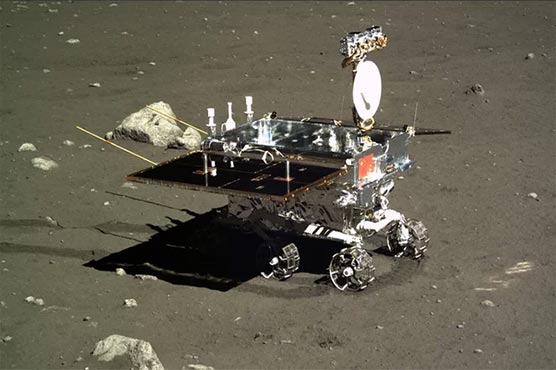China's moon rover prepares for a rough ride on the dark side

The Chang'e-4 probe -- named after a moon goddess -- made the world's first soft landing on the moon
BEIJING (AFP) - China on Friday hailed its historic mission to the far side of the moon as a "complete success" so far but said new challenges await its rover as it explores rugged terrain.
The Chang’e-4 probe -- named after a moon goddess -- made the world’s first soft landing on the moon’s "dark side" on January 3, a major step in China’s ambitions to become a space superpower.
A rover dubbed Yutu-2 -- or Jade Rabbit, the name of the moon goddess’s pet -- successfully separated from the lander and drove onto the moon’s surface about eight hours after landing.
The mission sent the first panoramic image of its landing site Friday, showing the grey moonscape it is exploring and the track marks left by the rover in the lunar soil.
"From the panorama, we can see the probe is surrounded by lots of small craters," said Li Chunlai, commander-in-chief of the ground application system for the Chang’e-4 mission, according to the official Xinhua news agency.
Chang’e-4 landed in the Von Karman Crater within the South Pole-Aitken Basin. The basin is the largest and deepest impact crater in the solar system.
The craters close to the rover -- including one that was 20 meters wide (65 feet) with a depth of about four meters (13 feet) -- will pose great challenges when planning its route, Li said.
The China National Space Administration (CNSA) said the initial stage of the mission was a "complete success" after the lander and the rover sent back images via the Queqiao relay satellite that beams data back to Earth.
The mission would now "progress to the scientific exploration stage," the space agency said in a statement.
Older surface
The Chang’e-4 probe is equipped with instruments developed by scientists from Sweden, Germany and China to study the lunar environment, cosmic radiation and the interaction between solar wind and the moon’s surface, Zhang Hongbo, chief designer of the ground application system, told state broadcaster CCTV.
Chang’e-4 is the second Chinese probe to land on the moon, following the first Yutu rover mission to its Earth-facing side in 2013.
A video of the latest mission’s landing -- produced using more than 4,700 pictures taken by a camera on the probe -- showed a "thicker layer of dust" offering "strong evidence" that its landing area is much older than the site where China’s previous rover landed, Li said.
Scientists have said the far side is a key area for solving several unknowns about the moon, including its internal structure and thermal evolution.
The deepest region on the moon, with a depth of 9,100 meters (5.7 miles), is about 700 kilometers (435 miles) to the south of the probe, Li said.
"The information from the depths of the moon will be one of our focuses in the exploration," he said.

